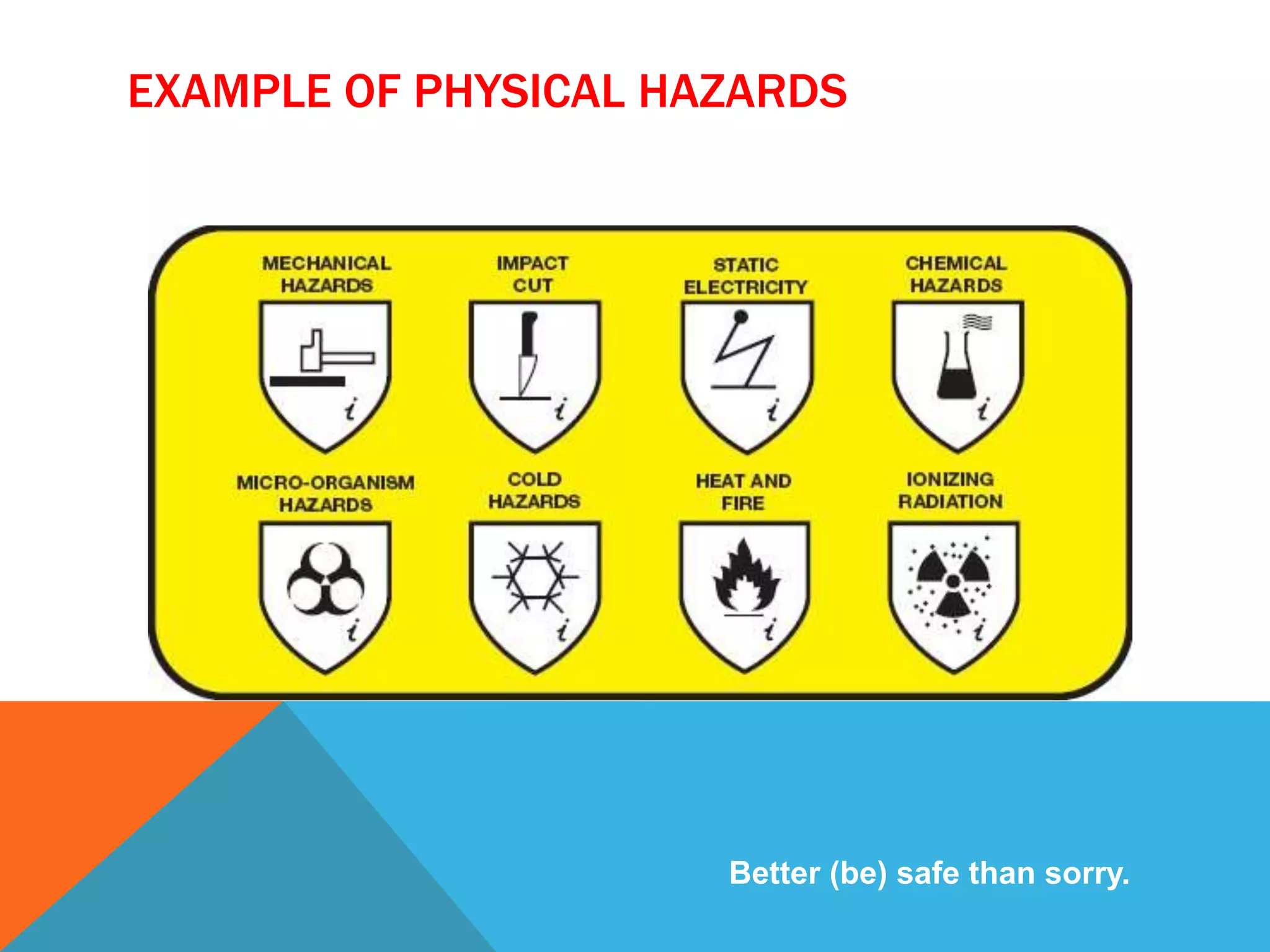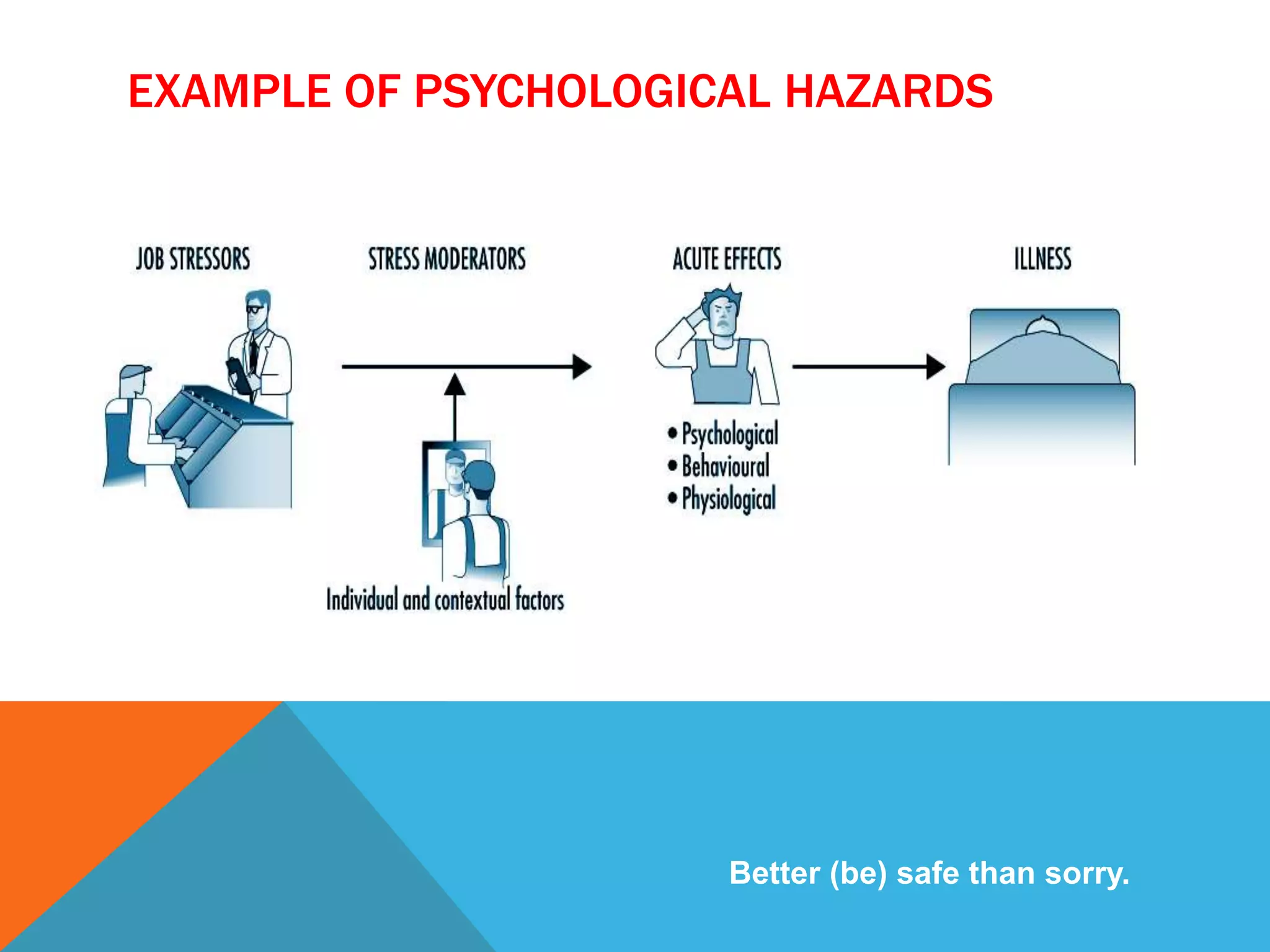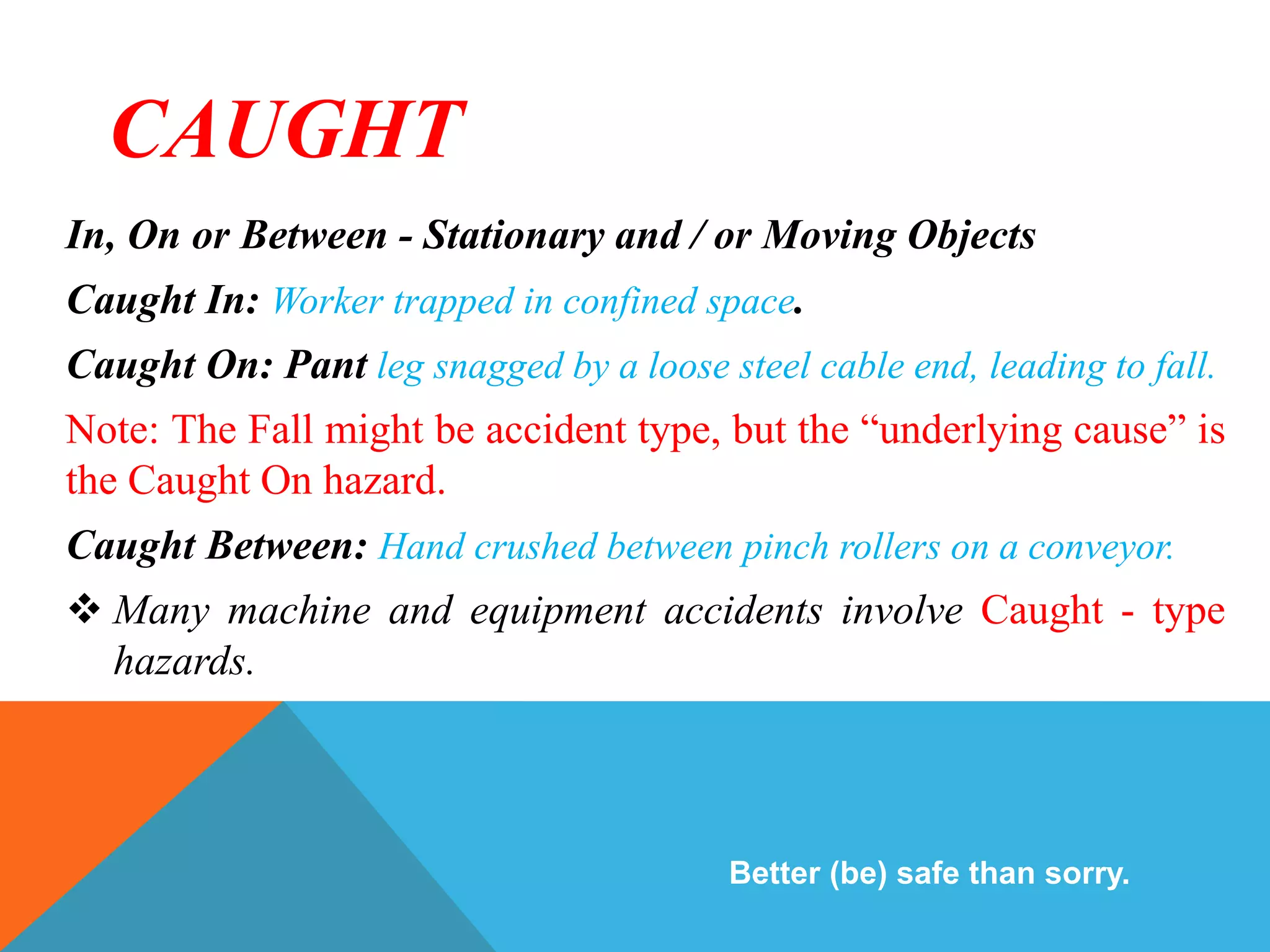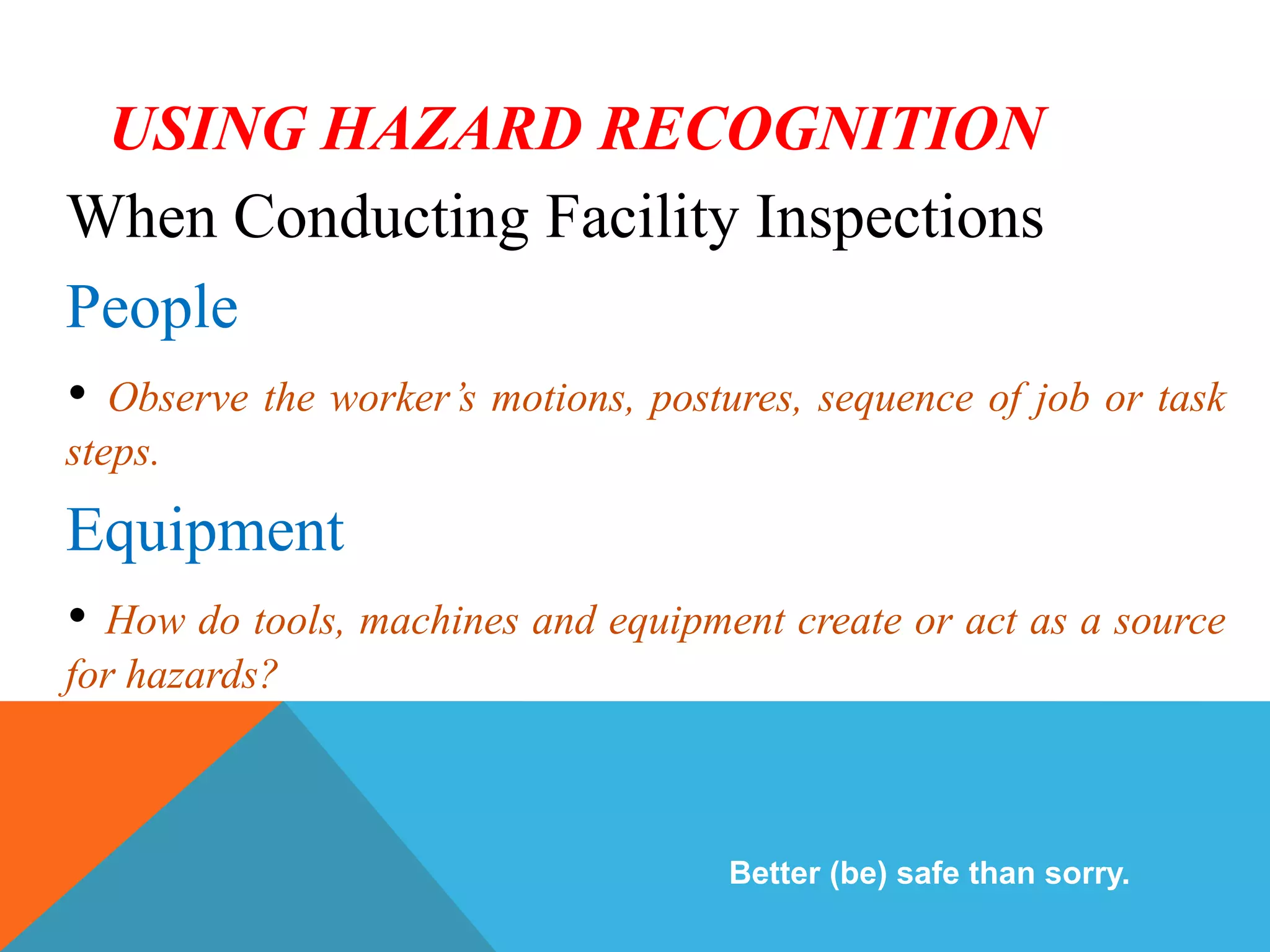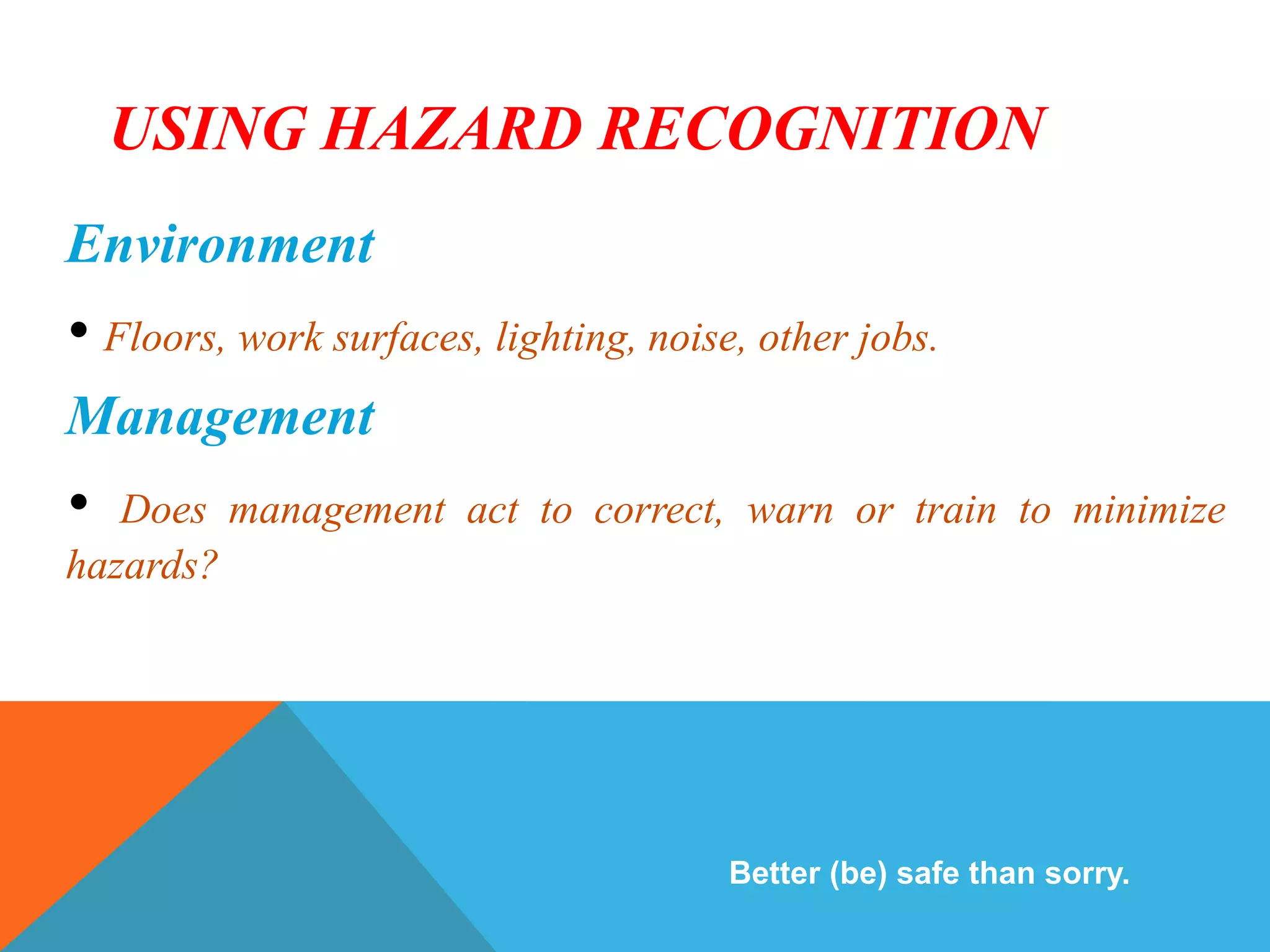This document discusses different types of hazards. It defines a hazard as anything with the potential to cause harm. Hazards are classified as physical, chemical, biological, psychological, or ergonomic. Physical hazards do not require contact to cause harm, and include electricity, radiation, noise, and vibration. Chemical hazards involve substances that can harm people through contact or inhalation. Biological hazards are biological agents that can infect people. Psychological hazards involve work-related stress. Ergonomic hazards harm the musculoskeletal system through repetitive motions or improper lifting. The document emphasizes identifying underlying causes of hazards to prevent incidents and injuries in the workplace. Hazard recognition techniques can be used for inspections, investigations, training, and awareness.









